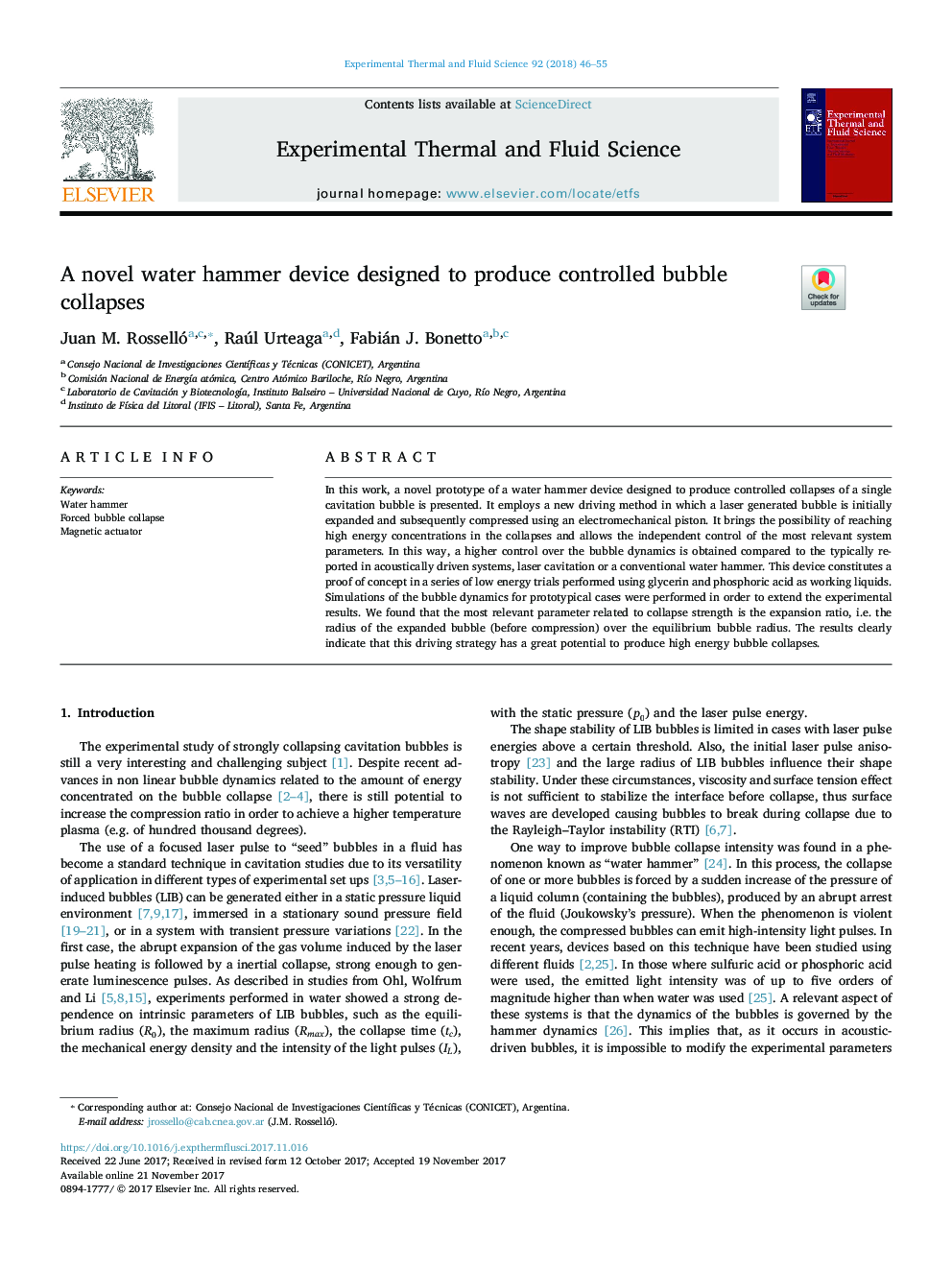| Article ID | Journal | Published Year | Pages | File Type |
|---|---|---|---|---|
| 7051803 | Experimental Thermal and Fluid Science | 2018 | 10 Pages |
Abstract
In this work, a novel prototype of a water hammer device designed to produce controlled collapses of a single cavitation bubble is presented. It employs a new driving method in which a laser generated bubble is initially expanded and subsequently compressed using an electromechanical piston. It brings the possibility of reaching high energy concentrations in the collapses and allows the independent control of the most relevant system parameters. In this way, a higher control over the bubble dynamics is obtained compared to the typically reported in acoustically driven systems, laser cavitation or a conventional water hammer. This device constitutes a proof of concept in a series of low energy trials performed using glycerin and phosphoric acid as working liquids. Simulations of the bubble dynamics for prototypical cases were performed in order to extend the experimental results. We found that the most relevant parameter related to collapse strength is the expansion ratio, i.e. the radius of the expanded bubble (before compression) over the equilibrium bubble radius. The results clearly indicate that this driving strategy has a great potential to produce high energy bubble collapses.
Keywords
Related Topics
Physical Sciences and Engineering
Chemical Engineering
Fluid Flow and Transfer Processes
Authors
Juan M. Rosselló, Raúl Urteaga, Fabián J. Bonetto,
